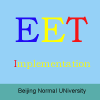-
Training: Event or Process?
普通类 -
- 支持
- 批判
- 提问
- 解释
- 补充
- 删除
-
-
Training: Event or Process?
TO MANY TRAINING IS CONSIDERED AN EVENT where at the conclusion of the event an individual has gained the knowledge and skill required, training is over, and performance will follow. However, knowledge and skill are not the same thing. Knowledge objectives can be effectively measured and accomplished in the classroom. On the other hand, skills must be coached and reinforced in the work environment to be effectively developed. Instructional designers creating skills-based training should always include a coaching plan in their design.
-
The case for coaching
Learning new skills can often be difficult and frustrating. Improvements typically are not immediate, and often decline while the new skills are being practiced. This lack of improvement causes many to give up on the new skills and revert to their comfort zone.
Figure 1 illustrates what should happen when learning a new skill (Rackham, 1979). Just after training results may dip as the new skill is being incorporated, but through continued practice results will increase. Unfortunately not everyone has the discipline to persevere through this period of declining results. Frustration sets in and the outcome looks more like the second set of lines. Development of the new skill diminshes to a pre-training level with no improvement in results.Figure 1
What should happen with a new skill vs. what often happens without coaching. (Click here)-
The coaching payoff
A well-designed skills training program anticipates the results dip and includes a coaching plan that provides the reinforcement and encouragement to help individuals through this period. Once the new skills are developed to a point where the individual begins to see success, the results themselves will sustain the new skill development.
Practicing new skills in the classroom through such methods as role plays is certainly important. However, the environment is artificial and there's typically not time to allow enough practice.
According to a study conducted by the Xerox Corporation on skills training, 87 percent of the desired skills change was lost without follow-up coaching. The implication is that no matter how good the classroom training is, the effectiveness is lost without on-the-job reinforcement.
Think of the training event as planting a seedling. Click here to see the effects of coaching.-
Keys to a good coaching plan
When planning for coaching and reinforcement it's critically important to be clear on the specific skills or behaviors to be coached, and to provide clear definitions of what is expected and the criteria for acceptable performance.
Typically coaching will be provided by the individual's manager. The designer must also consider the coaching skills of the manager when developing the coaching plan. One approach could be to identify the competencies required to effectively implement the plan, then suggest or arrange for training the coach if required.
Designing a job aid for the coach would help to ensure adherance to the coaching plan. The job aid should specifiy the skills to be observed to help the coach focus on desired behaviors. Including a checklist of effective coaching behaviors as prompts for the coaches would support the process even more.
Learning new skills can be challenging, but a process approach to training that extends beyond the classroom will dramatically increase the chances for success and the learners' satisfaction.-
More Information
For related ideas, see the EET article on Mentoring.-
Author
Jim Richardson -
-
- 标签:
- skills
- help
- process
- typically
- coaching.
- skill
- training
- coaching
- classroom
- event
- results
- plan
-
加入的知识群:



学习元评论 (0条)
聪明如你,不妨在这 发表你的看法与心得 ~